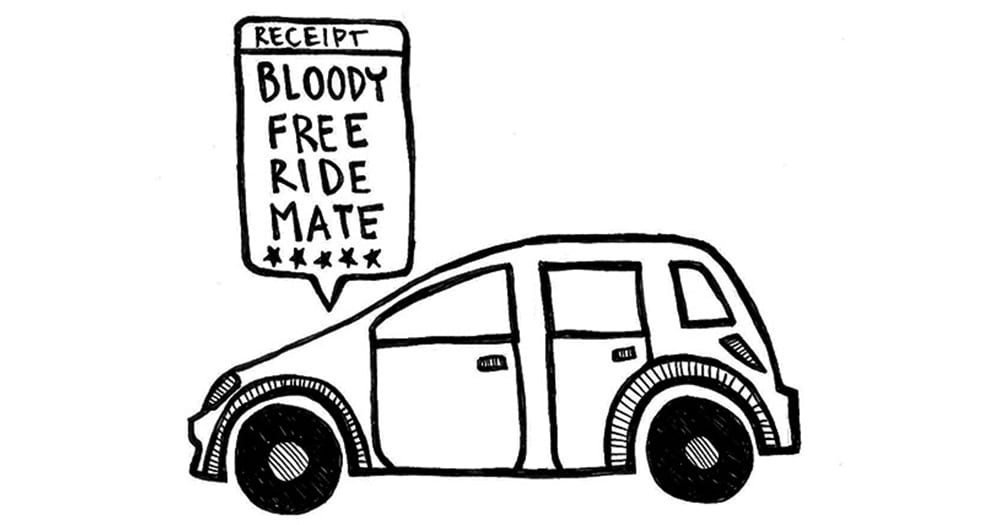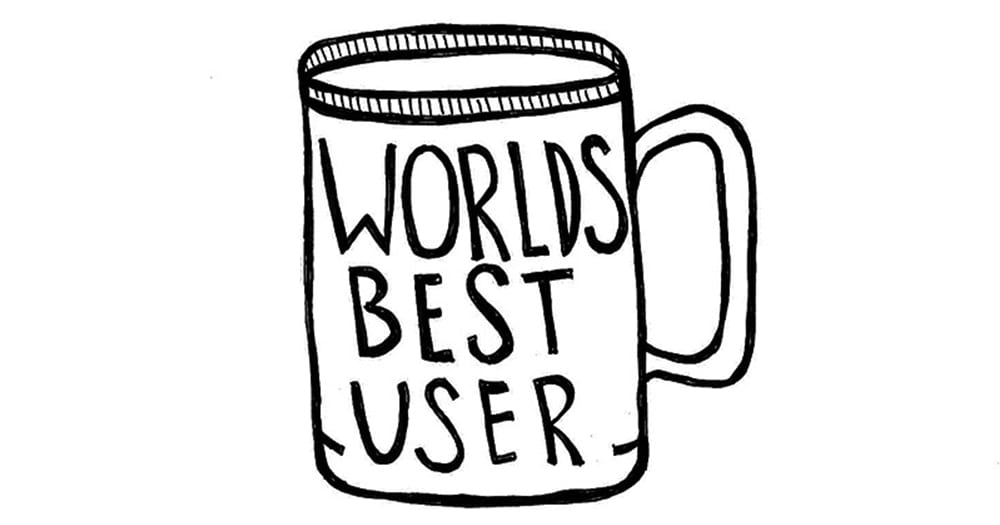Products

Is too much emotion making our advertising sad?
Tugging heartstrings isn’t always the best way to advertise.
The headline reads: “Emotional ads will lead to more sales.”
The first line reads: “Advertisements that elicit a strong emotional response will deliver an increase in sales.”
See what’s happened there? The obvious requirement of advertising to elicit some form of response got magically transformed into a divine directive for all ads to be emotional.
Sadly, this is merely symptomatic of the marketing industry’s perpetual but misguided mission to draw a distinction between emotional (good) and rational (bad) advertising. Here, emotional means funny, enjoyable, dramatic, colourful, with more feelings than facts. In fact it can mean pretty much anything, as long as it looks more like pure entertainment than anything so prosaic as an ad.
Not surprisingly, therefore, this misconception is being propagated all day, every day; in creative brainstormings, boardrooms, research debriefs, conferences and the trade press.
Here’s another one: people act and make decisions emotionally, not rationally. The threat (I’d like to say unspoken, but sadly repeated ad nauseam) being, if your advertising isn’t emotional enough to appeal to those all-powerful feelings, it will fail.

It’s quite sad really that most adults’ image of their own biology doesn’t get much more detailed than the illustrated children’s game ‘Operation.’ The brain has two hemispheres, one rational, one emotional and all decisions get made by one side or the other. Amazing to think marketing “academics” get paid to spout this stuff. The brain is a maze of neurons and electrochemical signals. We know about as much about its inner workings it as we know about the furthest reaches of space or our deepest ocean beds. Our actions can be rational, emotional, instinctual or, most of the time, an irrational mix of all three.
We can respond rationally, emotionally or instinctually to both emotional and rational communications. We do not need to see emotion to respond emotionally. We can respond emotionally to facts and rationally to emotions. There’s little emotion in a stone-faced policeman informing you of the death of a loved one, but inconsolable sorrow in response. Conversely a teary child with a scraped knee may trigger the instinctive reaction of antiseptic and a band aid, and a stern rational lesson on the dangers of skateboarding downstairs.
The problem is, it’s not just 21 year old sub editors who’ve been indoctrinated. The rot goes all the way to the top. One of the country’s most senior marketers at one of the biggest brands was recently quoted as saying: “an opportunity to create more emotional advertising and market to women.” Aside from the politically questionable undertone of such a statement (What? Women are more emotional so they need even more emotional advertising?! ), the resulting work is confusing, patronising, superficial and has very little relevance to the product or why anyone would buy it.
It’s what gives rise to campaigns like the latest BUPA commercial . If ever there was an example of why Clients shouldn’t try to write their own ads, this is it. ‘Little Moments Matter’ with a hackneyed video montage of “cute” family moments, featuring BUPA’s own staff – overflowing with emotion in the conceptualisation, skin crawling in the execution, but what on earth does it all have to do with buying health insurance?
Or how’s this from Transport for NSW telling regional drivers the road is “no place for excuses.” I have no idea where this convoluted bit of thinking came from (or, for that matter, why the world needs yet another driving safety advertisement, as if all the thousands of others wouldn’t work just as well). But the real irony here is that the press release quotes the Minister as stating: “If you live in the country you are 4 times more likely to die in a road crash.”
Four times!!!! More likely to die! Now that’s a fact.
That’s going to make me sit up and think. But where’s that in the commercial? Nowhere to be seen amongst the 60 seconds of soulful looking country people regretting their, apparently, inexcusably bad driving habits. Wouldn’t want to interrupt the emotion with anything so crass as a hard hitting fact.
Our actions can be rational, emotional, instinctual or, most of the time, an irrational mix of all three.
It’s a world gone even madder in the ridiculous quest for ever more emotion and entertainment and ever less product and reasons to purchase it.
And it’s the clients and their brands who are suffering, as agencies indoctrinate them into spending considerable sums of money trying to compete on an uneven playing field with Hollywood, Netflix, YouTube and all the other entertainment experts.
It shouldn’t be about the ad. It should be about giving people very good reasons to buy whatever it is you’re selling and making it relevant so that consumers can relate. The reality is: facts, news and information can elicit just as much of an “emotional” response and engagement when presented in the right way – and a lot more sales.
Is too much emotion making our advertising sad?
Tugging heartstrings isn’t always the best way to advertise. The headline reads: “Emotional ads will lead to more sales.” The first...
Read more
Your product is sh*t, marketing won’t help.
It’s a harsh statement I know, but by the end of this article you will see the problem areas and how to cut out the need for ridiculous levels of marketing for an early stage product.
At its core a new product or solution should include some function of built-in growth and marketing. Consideration to audiences and the resolution of a problem are integral to the success of any startup/product. More often than not startups are building ‘growth teams’ that claim to be able to sell water to a well instead of building out a product that markets itself. Resolving your product will see you achieve real sustainable growth that doesn’t require ‘hacking’. Here’s how some of the best have done it and why it’s flipping advertising on its head.
“If your product is good it doesn’t have to be great” — Paul Buchheit, creator of Gmail & Google AdSense
A roadblock to the launching of many products is the belief that every part of it needs to be perfect and ground-breaking. In reality and as highlighted by Paul Buchheit a product needs to have “three key attributes or features, get those things very, very right, and then forget about everything else”. If you aren’t sure what these are then get it sorted. Now. Once that is done consider the following.
All great product developers pay close attention to and ensure compatibility with their intended audience. Again if you aren’t sure who your audience is how do you know what problem you are solving and for whom? Product development should include work around your audiences, who they are, where they exist and how to communicate with them. Once you understand this you can build function into your product that will allow your core audience and the product itself to market for you.

About six months ago I purchased a Koala mattress (the Australian equivalent of Casper) and saw what is a fundamentally sound and effective product marketing itself. The first thing they did well was provide incentive for me to share information about their product so I would receive a discount on my purchase; by doing this I effectively provide qualified leads to them. Plus, this the product itself comes with ‘incentive’ to share content on social media, from the cute little fluffy Koala they send with every mattress (very Instagramable) to the awesomely fun unwrapping of the mattress (watch it here). Sure, Koala have active social media and other forms of advertising but the consideration into how the product works to sell itself is brilliant.

A ‘metric fucktonne’ (Australian metric system) of articles have been written about Uber so I won’t bang on about them here, but I do want to point out one thing. Uber asks their users to share a unique code with people that haven’t used the product yet, if you do so and the new person signs up you both receive $10 to put towards a ride. The new user could literally use Uber once for a free ride and delete the app but they are counting on their product (new cars, friendly drivers, bottles of water etc.) to draw you in. It’s a basic loss leader and it works. I have personally saved into the hundreds from sharing my unique code as an early user of Uber in Australia. Simple.
You can see from the examples of Koala and Uber that they have a sustainable function of sales integral to the product built in. This can minimise the need for large scale marketing and advertising if done correctly and allow you to focus on what really matters: your product.

Remember the following:
How does your product market itself?
Does the way your product market’s itself suit your intended audience? (If your product is intended for 50–70 y.o males find out where they exist, how to talk to them and how to get them to market for you).
Early adopters need to be rewarded. When you do right by your first users they will promote your brand for you.
Your product needs to be great, not good.
Marketing an unresolved and unattractive solution does no favours for anyone.
My final note is to bring everything together, if you can nail down the three core features of your product, integrate marketing and speak to the right audiences your product has a chance of cracking the market. Your product is not for you, it’s for people. Make it work for people.
If you want to be in touch you can contact me at chrismcmlou@gmail.com
Illustrations by Vanessa Brewster.
Your product is sh*t, marketing won’t help.
It’s a harsh statement I know, but by the end of this article you will see the problem areas...
Read more


